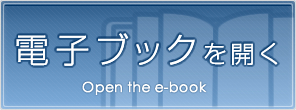For the Safety Navigation In Japanese Coastal Waters page 100/120
このページは For the Safety Navigation In Japanese Coastal Waters の電子ブックに掲載されている100ページの概要です。
秒後に電子ブックの対象ページへ移動します。
「電子ブックを開く」をクリックすると今すぐ対象ページへ移動します。
概要:
- 96 -Items to be Complied to Prevent Casualty of Running AgroundPlease comply the following items to prevent the casualty of running aground.1. Carriage of charts, etc.The ship shall carry charts to ....
- 96 -Items to be Complied to Prevent Casualty of Running AgroundPlease comply the following items to prevent the casualty of running aground.1. Carriage of charts, etc.The ship shall carry charts to satisfy the attached "Standards of Charts Required for Safety ofNavigation."It should also carry nautical publications required for the scheduled navigation including pilotbook and tide table.Ships for which charts, etc. are not required by the Ships Safety Law should carry charts ornautical publications such as chartlets for Yacht / motor boat as far as practical.2. Proper use of Charts(1) The charts shall always be readily available during navigation.(2) The charts shall be corrected and up-to-date according to the latest Notices to Mariners.(3) The scales of charts to be used shall comply with the attached "Standards of Charts Requiredfor Safety of Navigation" to meet the sea area of navigation.(4) Prior to navigation, course line and other notes shall be plotted in writing on the chart.(5) Prior to navigation, information to avoid obstacles such as danger line shall also be written onthe chart.(6) In case of using WGS-84 charts with Satellite Navigation System such as GPS, the selectingfunction of geodetic datum on instruments shall be selected to "WGS-84".3. Prepare Your Course in AdvanceThe charts and all nautical publications shall be sufficiently studied and updated well beforemaking a navigation plan. All the conditions of the navigation sea area shall be understood inadvance.4. Confirming Ship PositionKeeping in mind the conditions of the neighboring sea area, the exact position of your shipshall be constantly checked and updated.5. Performing Lookout(1) Lookout shall be performed during navigation, including the time of anchoring.(2) At night and when the visibility is poor, careful lookout shall be continued.(3) Special care shall be taken when using the automatic maneuvering because the lookout tendsto be neglected due to nobody at the bridge or dozing.6. Information of Weather Conditions and Underwater Environmental ConditionsThe latest information on weather and oceanographic conditions shall be obtained. Often a

